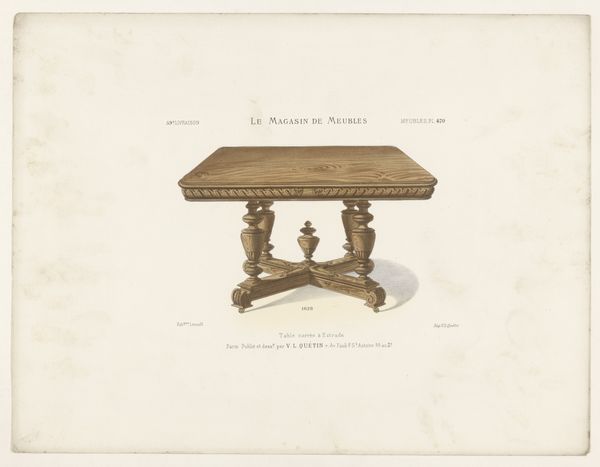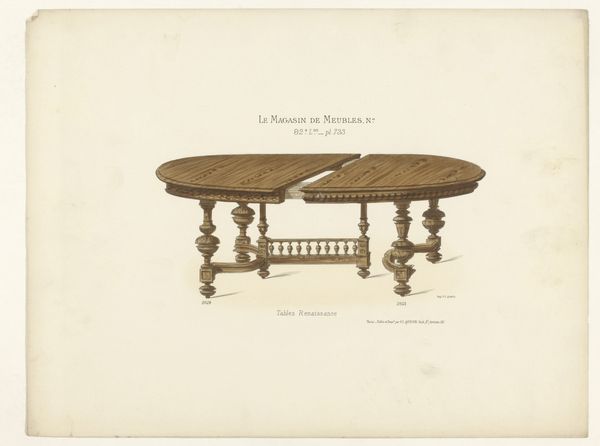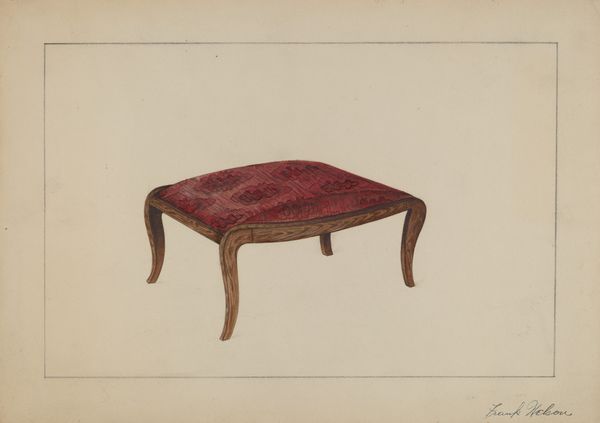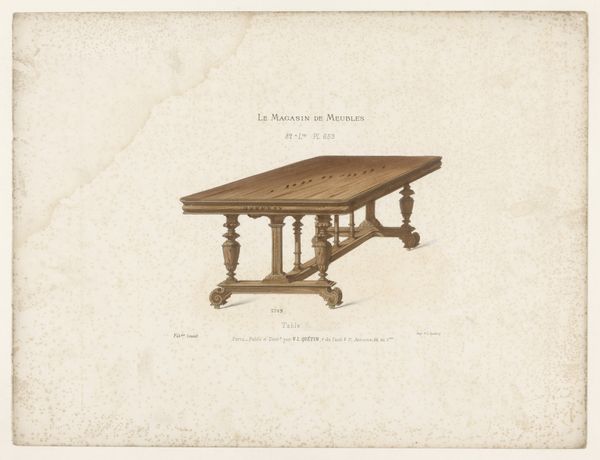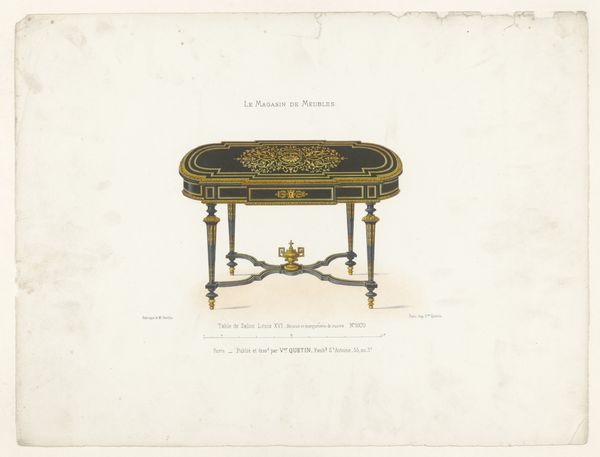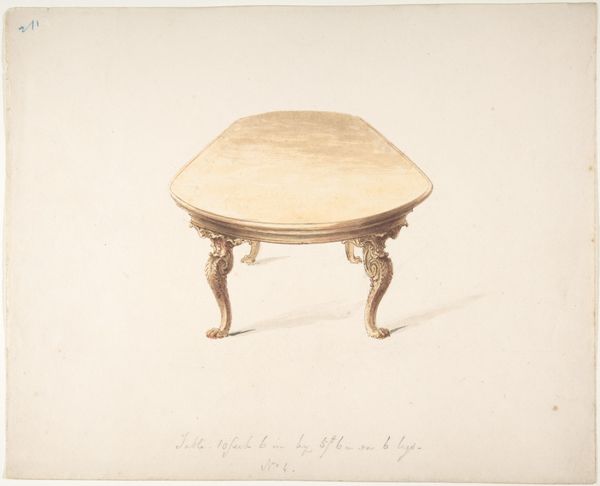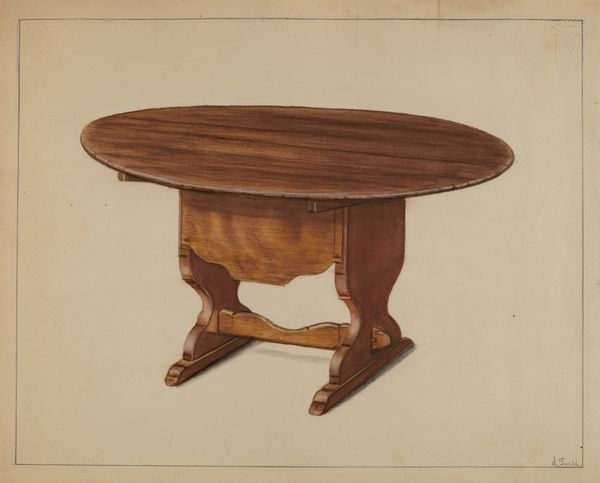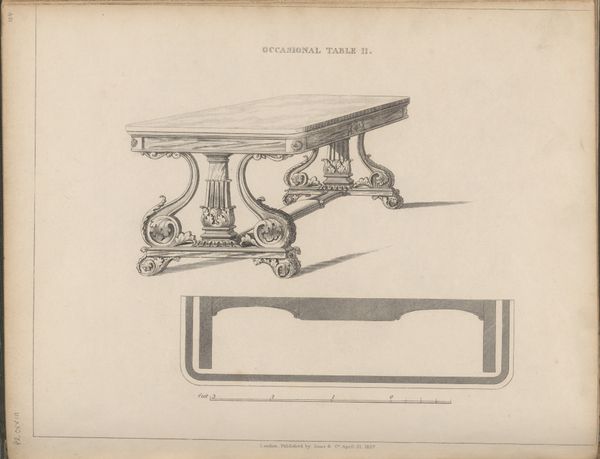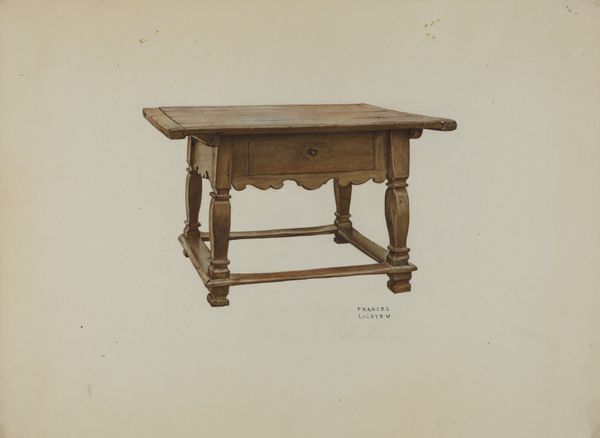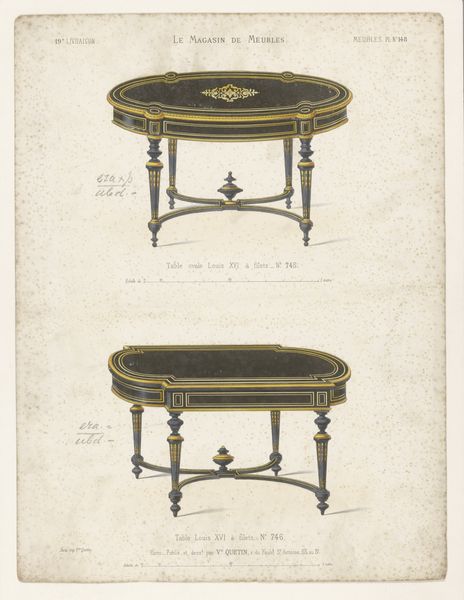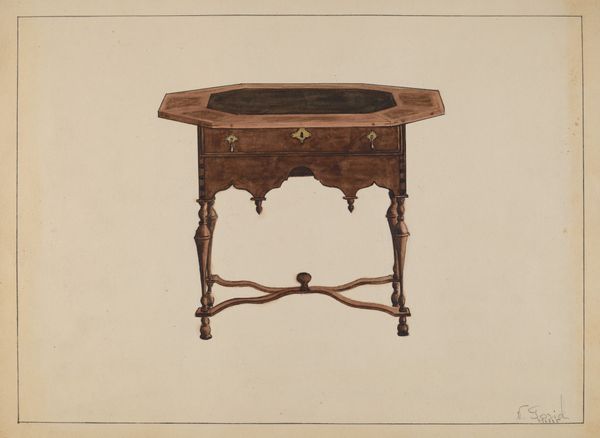
Dimensions: height 274 mm, width 357 mm
Copyright: Rijks Museum: Open Domain
Curator: Here we have a lithograph simply titled "Tafel," meaning "table" in Dutch and German. Produced anonymously sometime after 1878, the work reflects the decorative tastes popular during the Art Nouveau movement. Editor: My first impression is of an austere beauty. The palette is restrained, yet the detail in the woodworking, especially in the central support and table legs, is remarkably refined. Curator: Precisely! Considering its likely original purpose, perhaps as a trade catalogue illustration for furniture, there’s a meticulous attention given to the construction details—the joinery, the wood grain, even the castors. One could envision this piece reproduced en masse, contributing to the aesthetic sensibilities of middle-class homes. Editor: It strikes me as a study in form and shadow, using line to define the curvature and planes of the table. Observe the contrast between the smooth surface of the tabletop and the intricate carvings beneath. How does this contrast influence the viewer’s perception of function versus art? Curator: That's a valid consideration. But I see this piece more broadly. How was it circulated? Who had access to it? Such an image democratized design, bringing aspirations of elegance and quality into everyday reach, influencing broader social aspirations and consumer behaviors of the era. The question is, what labor processes allowed for such objects? Editor: Agreed that the democratization aspect is fascinating. Yet I come back to how effectively the artist uses the principles of design. The implied lines, the sense of balance... it draws your eye in. The visual language here transcends pure utility; it communicates elegance and aspirational status through pure aesthetics. Curator: Absolutely, both form and socio-economic function work together. We shouldn't dismiss the artistic composition, which no doubt played a vital role in positioning furniture of that era. However, let us be aware that "good design" is always about the interplay between the forces of taste and material forces. Editor: I see it differently now, recognizing how intrinsic design and form work together within such cultural objects. Curator: A fruitful observation to end our exchange!
Comments
No comments
Be the first to comment and join the conversation on the ultimate creative platform.
